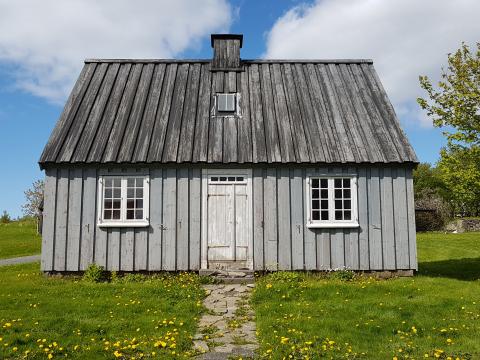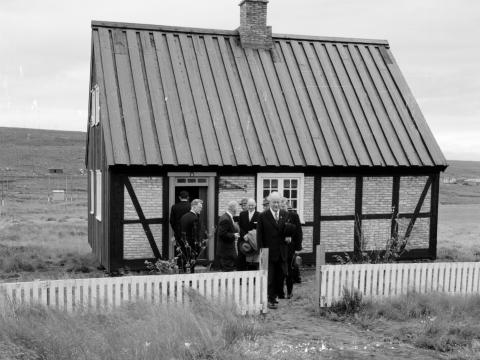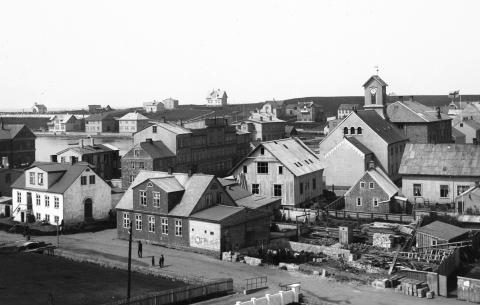
Hansen's House, a half-timbered house in the Danish-Icelandic style, is believed to have been built in 1823 and previously stood on the street address now known as Pósthússtræti 15. It is named after Símon Hansen, a Danish-Icelandic merchant, who lived there until he died in 1847. Teitur Finnbogason, who built the house on Suðurgata 7 (another one of the places moved to the Árbær Open Air Museum), also lived there for a while. The appearance of Hansen's House, the oldest house and the first to be transported to the museum, was little changed when it was relocated in 1960. There are three living rooms and a kitchen on the ground floor – all have been recently renovated. There are three more rooms in the loft.


Hansen's House is named after Símon Hansen, a Danish-Icelandic merchant from Reykjavík. Símon's father had been a merchant in Básendakaupstaður, but after the Básendi flood in 1799, the store closed down. Símon followed in his father's footsteps and opened a shop in Hafnarstræti in Reykjavík. He was one of the most prominent merchants of his time, and a respected member of the town council for many years, serving longest as the town council's treasurer. His wife was Kristín Stefánsdóttir, and together they had six children, as well as a foster daughter.
Símon Hansen died in 1847, but his son Henrich and his wife Eirný Erlendsdóttir lived in the house until 1864. They rented out a room in the house, and among their tenants were nationally renowned men like Jón Árnason, the folklore collector and the first National Library librarian, and Sigurður Guðmundsson, the first director of the Antique Museum, later the National Museum of Iceland.
Blacksmith Teitur Finnbogason moved into the house with his wife, Guðrún Guðbrandsdóttir, in 1864. The place was called "Teitur's House" while he lived there. Teitur rented out a room in the house as well, and Sigfús Eymundsson, the well-known photographer and bookseller, lived there from 1868-69. After Teitur's death, Guðrún lived in the house until 1887.
After the town's post office was moved to a house next door to Hansen's House, the street the house stood by got the name Post Street (Póststræti) and later Post Office Street (Pósthússtræti). The last name stuck, and in 1887 Hansen's House got the house number 15.
The house was sold a few times over the next few years. A new house was built in front of it with the address, Pósthússtræti 13 (it has since been torn down). Carl Sæmundsen bought the house around the turn of the 20th century. He was a generous merchant in his time, buying many historical buildings like Bessastaðir and Ostervoldgade 12 in Copenhagen, also called Jónshús. He gave both of these houses to the state, and Reykjavík was given Hansen's House. It was the first house moved to Árbær Open Air Museum in 1960.

